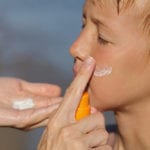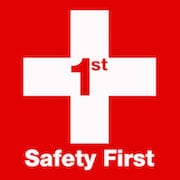
Sunburn increases your risk of skin cancer and can cause premature aging of the skin. People with fair skin, lots of freckles, red hair or some medical conditions are more at risk of sunburn, but anyone can burn on a sunny day. Taking precautions to protect your skin reduces the risk of sunburn.
Avoid Strong Sunlight
Avoid direct sunlight when the sun is at its hottest, which is usually between 11 a.m. and 3 p.m. Even on a cloudy day, the sun’s UV rays can harm your skin. Stay in the shade as much as possible and drink plenty of water to prevent dehydration. Take extra precautions to shield young children from the sun, as sunburn can increase their risk of developing skin cancer in later life.
Wear Appropriate Clothing
Wear light clothing and long-sleeved shirts to protect your skin. A wide-brimmed hat will help to shelter your face and neck, the most common areas for sunburn. Always wear sunglasses, as the sun can cause both temporary and permanent damage to your eyesight.
Use Sun Protection
Choose suncream with a sun protection factor (SPF) of at least 15. If you have fair or sensitive skin that burns quickly, choose products with a higher SPF.
Apply a generous layer of suncream to all areas of skin exposed to the sun, including your ears and the back of your neck. Many people only apply a thin layer of suncream, but this doesn’t provide enough protection on sunny days.
If possible, apply the suncream at least 20 minutes before going out into the sun. Water, sweat and rubbing your skin will all wash away or remove suncream, so it’s important to reapply it at regular intervals, particularly if you are swimming or working up a sweat.
Sunburn is painful and can even lead to skin cancer. Wearing suncream helps to protect your skin from sunburn; the higher the SPF, the longer you will be able to stay in the sun before burning. However, suncream cannot block all of the harmful UV rays and should never be your only protection. Wearing appropriate clothing and staying in the shade when the sun is at its hottest are as important as wearing suncream.
